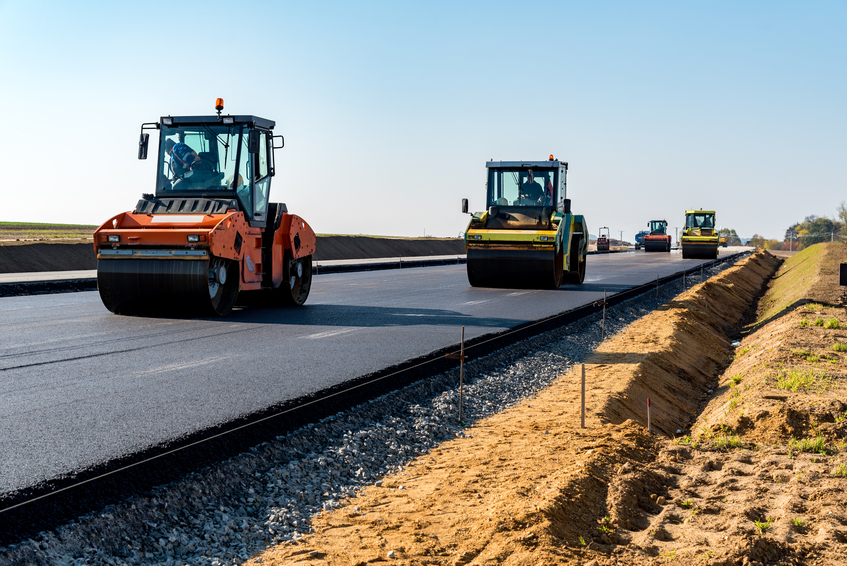Minnesota Civil and Ethics 24 PDH Discount Package 1
Courses in this Package
Low Impact Development Design Strategies (C07-006)
Curing Portland Cement Concrete Pavements (C05-006)
Rational Method Hydrologic Calculations with Excel 2 (C01-010)
Groundwater Hydrology (C09-002)
Engineering Ethics for Minnesota Professional Engineers (MN2-002)

This online engineering PDH course describes the wide array of impact reduction and site design techniques that allow engineers and planners to create stormwater control mechanisms that function in a manner similar to that of natural control mechanisms.
The low-impact development (LID) approach combines a hydrologically functional site design with pollution prevention measures to compensate for land development impacts on hydrology and water quality. The primary goal of Low Impact Development methods is to mimic the predevelopment site hydrology by using site design techniques that store, infiltrate, evaporate, and detain runoff. Use of these techniques helps to reduce off-site runoff and ensure adequate groundwater recharge. Since every aspect of site development affects the hydrologic response of the site, LID control techniques focus mainly on site hydrology.
This 7 PDH online course is intended for civil and environmental engineers and planners as well as construction professionals who are interested in learning about low impact development design techniques and their applications.
This PE continuing education course is intended to provide you with the following specific knowledge and skills:
- Understanding low-impact development goals
- Understanding low-impact development site planning
- Understanding low-impact development hydrologic analysis
- Understanding low-impact development integrated management
- Understanding erosion and sediment control considerations for low-impact development
In this professional engineering CEU course, you need to review the course document titled "Low-Impact Development Design Strategies" prepared by the Prince George's County
Upon successful completion of the quiz, print your Certificate of Completion instantly. (Note: if you are paying by check or money order, you will be able to print it after we receive your payment.) For your convenience, we will also email it to you. Please note that you can log in to your account at any time to access and print your Certificate of Completion.

This online engineering PDH course provides guidance on details of concrete curing practice as they pertain to construction of Portland cement concrete pavements. It is organized around the major events in curing pavements: curing immediately after placement (initial curing), curing during the period after final finishing (final curing), and termination of curing and evaluation of effectiveness of curing.
Curing has long been recognized as an important process in constructing durable concrete pavements. Proper curing allows the concrete to develop its potential strength and durability. Inadequate curing can result in surface damage in the form of plastic shrinkage cracking, spalling, and erosion of paste. Since many variables influence the choice of curing materials and when and how to apply curing, the material presented places particular emphasis on attention to details with respect to moisture retention and concrete temperature control.
This 5 PDH online course is applicable to civil, structural and geotechnical engineers, as well as design and construction personnel involved with the design and installation of concrete pavements.
This PE continuing education course is intended to provide you with the following specific knowledge and skills:
- Selection of curing materials and procedures
- Analysis of concrete properties and jobsite conditions
- Knowing how to adjust the curing practice to account for specific project conditions
In this professional engineering CEU course, you need to review the Federal Highway Administration Publication FHWA-RD-02-099, "Guide for Curing of Portland Cement Concrete Pavements".
Upon successful completion of the quiz, print your Certificate of Completion instantly. (Note: if you are paying by check or money order, you will be able to print it after we receive your payment.) For your convenience, we will also email it to you. Please note that you can log in to your account at any time to access and print your Certificate of Completion.

This online engineering PDH course will enable you to calculate peak storm water runoff rate using the Rational Method equation in either U.S. or S.I. units, including determination of runoff coefficient, calculation of time of concentration, and determination of design rainfall intensity. It will also prepare you for the use of Excel spreadsheets to efficiently make the calculations.
Calculation of peak storm water runoff rate from a drainage area is often done with the Rational Method equation (Q = CiA). Use of Excel spreadsheets for calculations with this equation and for determination of the design rainfall intensity and the time of concentration of the drainage area, are included in this course. The parameters in the equations are defined with typical units for both U.S. and S.I. units.
This 1 PDH online course is applicable primarily to civil engineers, hydraulic engineers, highway engineers, and environmental engineers, design professionals, technical and construction personnel who are interested in gaining a better understanding of the rational method hydrologic calculations using Excel.
This PE continuing education course is intended to provide you with the following specific knowledge and skills:
- Knowing the parameters and their U.S. and S.I. units to be used in the Rational Method equation
- Ability to calculate peak storm water runoff rate with the Rational Method equation, using either U.S. or S.I. units
- Ability to place a given soil into one of the four SCS soil groups based on its measured minimum infiltration rate
- Ability to place a given soil into one of the four SCS soil groups based on its description
- Ability to determine a value of the Rational Method runoff coefficient based on land use, soil group, and slope of the watershed
- Ability to calculate the overland sheet flow travel time for a watershed using the Manning Kinematic equation
- Ability to calculate the shallow concentrated flow travel time for a watershed using the NRCS method
- Ability to calculate the open channel flow travel time for a watershed using the Manning equation
- Knowing the form of the equation used for rainfall intensity as a function of storm duration for a specified return period
- Familiarity with methods for using Excel spreadsheets to make the different types of calculations
In this professional engineering CEU course, you need to review the course document tilted, "Rational Method Hydrologic Calculations with Excel".
Upon successful completion of the quiz, print your Certificate of Completion instantly. (Note: if you are paying by check or money order, you will be able to print it after we receive your payment.) For your convenience, we will also email it to you. Please note that you can log in to your account at any time to access and print your Certificate of Completion.

This online engineering PDH course presents an overview of the occurrence and movement of groundwater. Procedures for planning and managing a site characterization and modeling study are then presented. This is followed by chapters addressing the technical aspects of field investigative methods and computer modeling. A final chapter discussing the interaction of groundwater and surface water is then presented.
Since it is not possible to provide specific instructions and/or specific procedures that are universally applicable to every situation that may be encountered, this course emphasizes the use of sound judgment and the development of a good understanding of basic groundwater concepts rather than providing specific guidelines.
This 9 PDH online course is applicable to civil and environmental engineers, as well as design and construction personnel involved with the study and analysis of groundwater flow.
This PE continuing education course is intended to provide you with the following specific knowledge and skills:
- Occurrence and movement of groundwater
- Planning a groundwater investigation and modeling study
- Field investigative methods
- Computer modeling of groundwater flow
- Interaction between surface water and groundwater
In this professional engineering CEU course, you need to review the US Corps of Engineers Publication EM 1110-2-1421, "Groundwater Hydrology".
Upon successful completion of the quiz, print your Certificate of Completion instantly. (Note: if you are paying by check or money order, you will be able to print it after we receive your payment.) For your convenience, we will also email it to you. Please note that you can log in to your account at any time to access and print your Certificate of Completion.

This online engineering PDH course presents the laws and rules of ethics and professional responsibility governing the practice of engineering in the State of Minnesota. Excerpts from Chapter 326 of the Minnesota Statutes and Chapter 1805 of the Minnesota Administrative Rules, which relate to the laws and rules of professional conduct are presented in this course.
Engineering ethics is (1) the study of moral issues and decisions confronting individuals and organizations involved in engineering and (2) the study of related questions about moral conduct, character, ideals and relationships of peoples and organizations involved in technological development (Martin and Schinzinger, Ethics in Engineering).
Since engineers are faced with frequent moral and ethical dilemmas while practicing their engineering profession, this course will provide you with moral and ethical guidance in your decision making process. Most importantly, it will provide you with insight on how to conduct, respect and protect your engineering practice with the utmost professionalism.
This 2 PDH online course is applicable to Professional Engineers licensed in the State of Minnesota and who are required to demonstrate continuing professional competency in engineering ethics as a condition of their license renewal. For each renewal period, every licensee must complete twenty four (24) professional development hours, at least two (2) of which must be relative to professional responsibility, conduct and ethics.
This PE continuing education engineering course is intended to provide you with the following specific knowledge and skills:
- Familiarizing with the laws and rules regulating the practice of engineering in the State of Minnesota
- Understanding the role of the Minnesota Board and its disciplinary authority
- Learning about engineering ethics, the laws and rules of professional conduct and responsibility
- Gaining an overview of disciplinary case studies along a range of violations and their corresponding penalties
Upon successful completion of the quiz, print your Certificate of Completion instantly. (Note: if you are paying by check or money order, you will be able to print it after we receive your payment.) For your convenience, we will also email it to you. Please note that you can log in to your account at any time to access and print your Certificate of Completion.